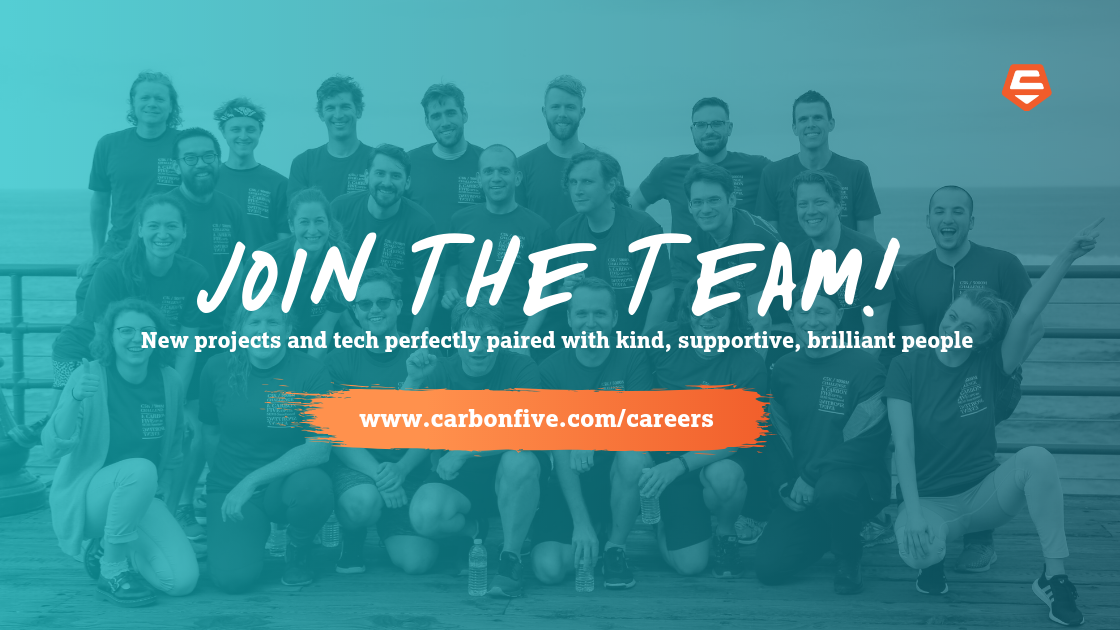
Working with Guests: Seven Tips for Getting your Company Ready to Leverage External Firepower
Companies have been successfully partnering with consultants since the dawn of time. Think IDEO’s work with Apple to create the mouse or Microsoft’s work with IBM to create MS-DOS. Our nation’s competitive strength comes, in large part, from this openness to collaborate, to learn from each other, to move quicker, and to leverage outside strengths, when needed and without shame.
Regardless of where you stand on the topic of partnering, there is one thing you have to realize. If you’re in tech and growing fast, there is a high likelihood you will have to partner at some point to meet your goals. Today’s labor market is just too tight to fill all the demand for experienced software talent.
The current statistics and turnover data in tech are dizzying; on average, it takes two months to fill a role, startup turnover is just two years, and the total cost to replace a high paid employee can be as much as 2x their salary! In fact, right now you’re probably swamped trying to recruit people. You’re far too busy to make headway on that big project or consider what a contingency strategy looks like if you can’t hire, or even worse if more people leave before your next milestone.
In talking about this hiring dilemma with startup founders and investors, I was asked to share Carbon Five’s perspective on how startups can better prepare to partner. As a result, I put together a checklist to prepare a company for leveraging external resources.
This list makes no specific assumptions around the types of partner you intend to use, whether it be onshore, offshore, firm or freelance. The items on this list are also mostly best practices in either security or project management, so if you are already setting that bar – hurray!
Partner Engagement Prep List
1. Shift from Company Lingo to Shared Language to Speed up Transmission
Your communication as a company is full of cultural nuance, domain specifics, and insider shorthand. To be effective when communicating with a broader group, you need to make adjustments. Think about how you might communicate differently at the United Nations versus your neighborhood cafe? You need to clarify your communication for a general audience and make the information relatable. Don’t just submerge folks under the firehose of all your company vernacular. Your project will move much faster if your team leads through simplification and using layman’s terms.
Protip – prepare a glossary for terms of art or domain that are crucial for new folks to understand.
2. Identify Your Team & Goals to Get on the Same Page
Some consultants require substantial participation from key stakeholders. Assess who from your team can participate, and for how much time given what else is on their plate. Some partners, notably strategic consulting firms will help shape the work to be done, so there isn’t always the need to create a “requirements document,” but knowing what constitutes success for your project will help everyone get on the same page.
3. Shield Your Production Environment from Missteps
It’s easy to create a mock environment and have your team use that for writing new code, thus protecting your real environment from a wrong move that takes down your site. Given the liability of real data, especially sensitive data like personally identifiable information (PII), most partners will make it part of their terms to specifically not have access to it. Why would you give everyone access to your direct line of revenue and connected database? You should limit access unless absolutely necessary.
4. Provide Maps to Avoid Operating in the Dark
Your new contributors don’t have the benefit of an extended onboarding. It’s your job to provide them with the tools they’ll need to contribute in a productive manner. I’ve found a stakeholder map and system diagrams (architecture, relational maps, etc) can go a long way. Make it easy for your contributors to confidently reach out to the right stakeholder when there is a question, or understand who is the owner of a dependent service.
5. Make an Access List to Facilitate Onboarding
You need to figure out how easy it will be to get new contributors onboard. Make a list of all the tools that a contributor will need access to in order to contribute to the project (e.g. Heroku, JIRA, Github, Abstract, Slack, etc.). Then determine the admins of those tools, the process and lead time for getting access, and whether there are any specific steps for contractors (e.g., a default deactivation date that needs to be renewed). Make sure those dates are on your calendar in advance so you don’t have resources suddenly blocked by an expired user account.
6. Sort Out Procurement Requirements to Prevent Delays
Some industries have specific compliance regulations that you need to consider. Perhaps there is a requirement for a background check, use of a VPN, or use of a company machine. If consultants must use company-provided hardware, make sure that hardware is available well before the planned start date.
Protip – find out what kinds of contracts exist with other vendors, and what’s needed to get contracts with new vendors in place.
7. Understand What You Value in a Partner for Better Matching
Do you care about collaboration, learning best practices, quality, or keeping costs low? Knowing what you and your organization values will help you quickly select an appropriate vendor, and work well with the partner you choose.
This list was not meant to be exhaustive. It’s more of a starter for getting organized and ready to successfully leverage outside talent. There are, of course, many other things to sort through – weekly cadence, tools, delivery/ review process, etc, but those can be discussed once you’ve landed on a partner and are ready to kickoff the project.
In preparing this post, I also reached out to some entrepreneurs to get their tips on working with contractors. Below are their thoughts from past engagements with outside resources.
NYC Product and Tech leader, Alec Turnbull, has learned a lot about working with external teams, especially remote teams. Turnbull is a strong advocate for remote work with which he has found a great deal of success. One of the biggest learnings he found was around the value of bringing people out to meet in person.
“You want the team building your product to feel a sense of pride in the work they are doing.”
Bringing those people out to see your office and build a rapport with the team goes a long way. Another tip, if your company is not employing a remote-first mentality, designate a “remote advocate” for the team. You want to make sure that someone is empowered to care and represent the interests of your remote team.
“Communication is always hard. Remote is harder,” Turnbull rightfully proclaims. This is why he recommends screening contractors for how the language skills feel. Take the 15 minutes to ensure the communication is fluid before you bind yourself in a remote relationship with a partner.
Serial Entrepreneur and current Product Designer at Looker, Alex Scott, talks about two times in particular where outsourcing helps: 1) When you’re at an early stage of a project and need flexibility to scale down or change direction entirely, which is hard with full-time employees 2) You need to aggressively reach some clearly defined goals – and sourcing, hiring and onboarding full-time staff would take too long.
Scott’s advice for companies new to outsourcing is to game plan your strategy to your budget. “If you’re on a tight budget, compare strengths to find the best bet for your buck and line up strong technical advisors in your network to help guide strategic technical decisions.”
As you can see, spending a little bit of effort planning out your engagement and organizing yourselves for collaboration could save you significant time and money and de-risk the collaboration from day one. It’s well worth the investment.
Questions? Reach out! We’ve partnered with hundreds of clients to help them build amazing products and effective teams.
Illustration by Erin Murphy.

Now hiring developers, designers, and product managers.
Apply now: www.carbonfive.com/careers